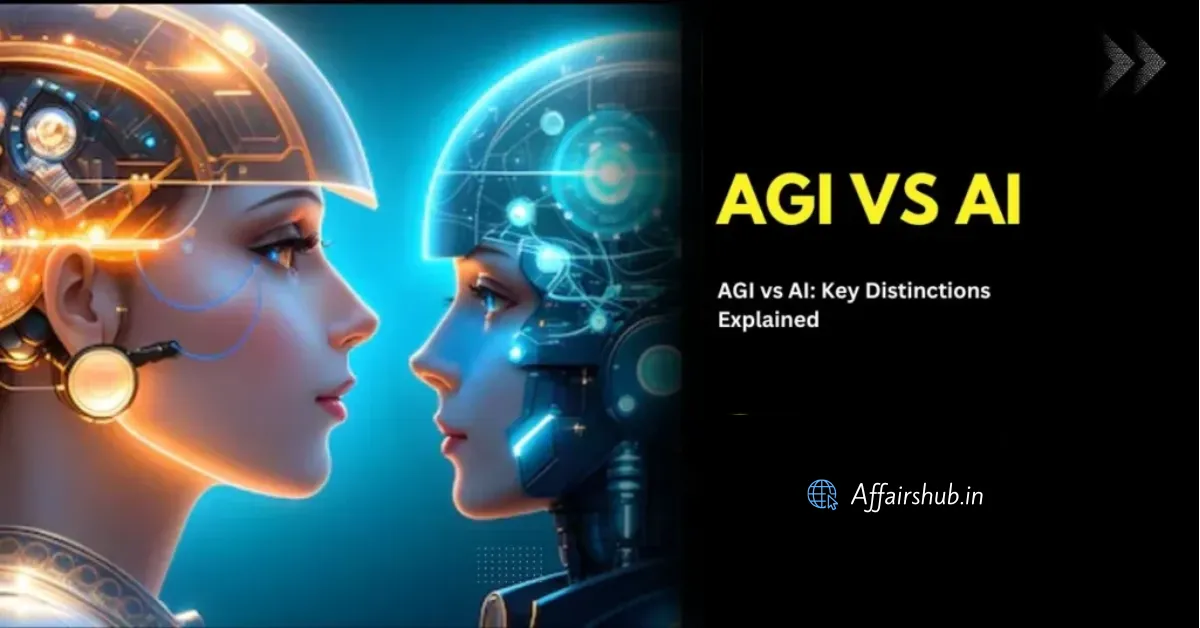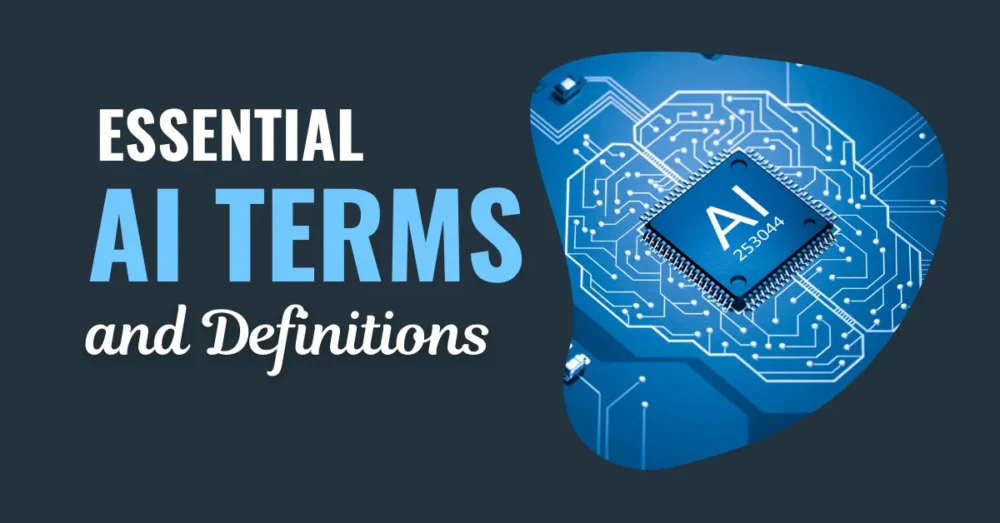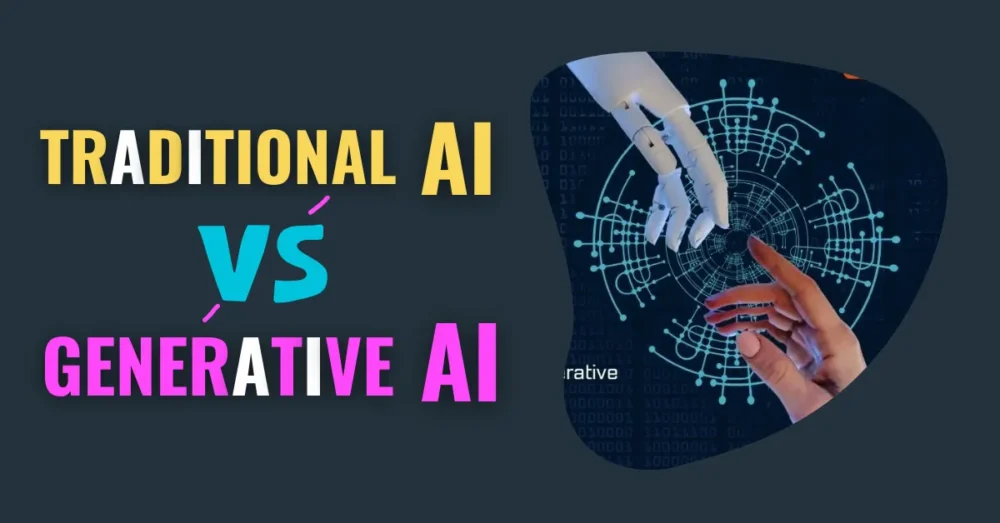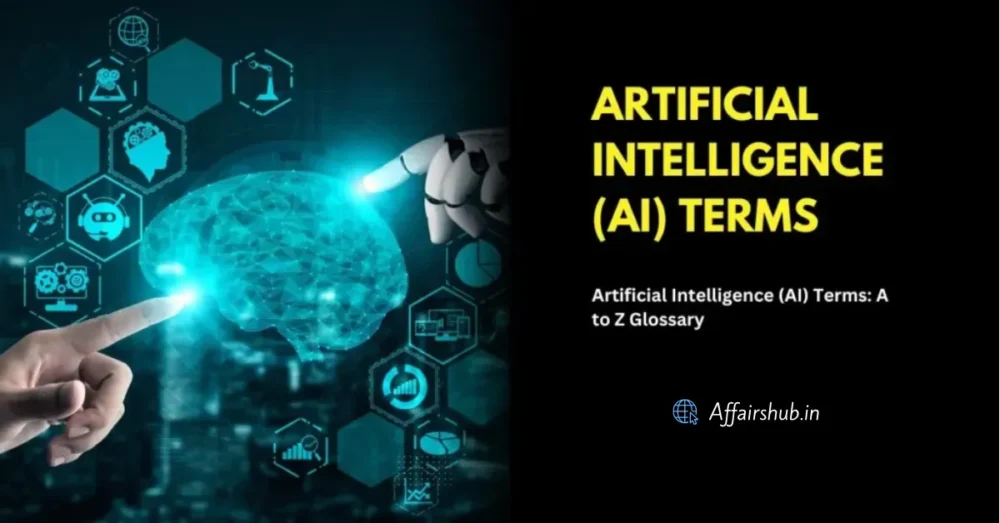In today’s rapidly evolving technological landscape, the terms Artificial Intelligence (AI) and Artificial General Intelligence (AGI) are frequently used interchangeably. However, understanding the key difference between these two concepts is crucial for grasping the trajectory of AI development and its potential impact on society. This article discussed the distinctions between AGI and AI, highlighting their origins, characteristics, applications, and implications.
The Rise of Artificial Intelligence
Artificial Intelligence, often abbreviated as AI, has witnessed a meteoric rise in recent years, saturating various aspects of our lives. AI technologies have become ubiquitous, from personalized recommendations on streaming platforms to voice-activated virtual assistants. This proliferation can be attributed to advancements in computing power, algorithms, and data availability, fueling the expansion of AI applications across industries.

Understanding the Nuances: AGI vs AI
While AI encompasses a spectrum of technologies designed to perform specific tasks with human-like intelligence, AGI represents a higher level of artificial intelligence capable of understanding and learning from diverse sets of data.
Unlike narrow AI, which excels at specialized tasks within constrained domains, AGI aims to replicate the broad cognitive abilities of humans, including reasoning, problem-solving, and adaptation.
✅ Also Read: Enhancing ChatGPT Response Quality: Factors to Consider?
AGI vs AI Explained in a Nutshell
Here is a tabular comparison between Artificial General Intelligence (AGI) and Artificial Intelligence (AI):
| Feature | Artificial Intelligence (AI) | Artificial General Intelligence (AGI) |
|---|---|---|
| Definition | AI refers to machines designed to perform specific tasks by mimicking human intelligence. | AGI refers to machines with the ability to understand, learn, and apply intelligence across a wide range of tasks, similar to human cognitive abilities. |
| Scope | Narrow and task-specific. | Broad and versatile across various domains. |
| Learning | Generally relies on supervised learning with labeled data. | Capable of unsupervised learning and adaptation like humans. |
| Flexibility | Limited to predefined tasks and cannot easily transfer learning to new domains. | Highly flexible, can apply learned knowledge to new, unfamiliar situations. |
| Examples | Chatbots, recommendation systems, image recognition. | Hypothetical at present, future goal of AI research. |
| Human-like Understanding | Lacks true understanding and consciousness. | Aims to achieve human-like understanding and consciousness. |
| Development Stage | Currently well-developed and widely implemented. | Still in the theoretical or early experimental stages. |
| Efficiency | Highly efficient in performing specific tasks. | Expected to be efficient across diverse tasks once developed. |
| Error Handling | Often struggles with unexpected inputs or scenarios. | Should be able to handle unexpected inputs more gracefully. |
| Creativity | Limited, follows programmed logic and rules. | Aims to exhibit creativity similar to human beings. |
| Autonomy | Generally requires human oversight and intervention. | Expected to operate with a high degree of autonomy. |
| Technological Impact | Already impacting various industries like healthcare, finance, and transportation. | Potential to revolutionize multiple fields by providing human-like intelligence. |
| Ethical Considerations | Focus on data privacy, algorithmic bias, and job displacement. | Raises broader ethical concerns about autonomy, consciousness, and societal impact. |
Let’s discuss this in detail along with future possibilities.
Defining Artificial Intelligence (AI)
Origins and Evolution
The roots of AI can be traced back to the mid-20th century, with seminal works by pioneers such as Alan Turing and John McCarthy laying the groundwork for machine intelligence.
Over the decades, AI has evolved from symbolic logic and rule-based systems to encompass statistical methods, machine learning, and deep learning, driving unprecedented breakthroughs in tasks like natural language processing and image recognition.
Characteristics and Applications
AI exhibits a diverse range of characteristics, including pattern recognition, decision-making, and autonomous learning, making it suitable for a myriad of applications across industries.
From healthcare diagnostics and financial forecasting to autonomous vehicles and personalized recommendations, AI technologies are reshaping how we interact with information and automate processes.
Limitations and Challenges
Despite its transformative potential, AI faces several limitations and challenges. These include algorithmic biases, data privacy concerns, and ethical dilemmas surrounding the deployment of autonomous systems. Addressing these challenges requires interdisciplinary collaboration and a holistic approach to AI development, ensuring that technology serves the common good while minimizing unintended consequences.
Exploring Artificial General Intelligence (AGI)
Conceptual Framework
Artificial General Intelligence represents the pinnacle of machine intelligence, encompassing the ability to understand, learn, and adapt to novel situations in a manner akin to human cognition. AGI seeks to replicate the holistic nature of human intelligence, integrating sensory perception, reasoning, and emotional understanding to navigate complex environments autonomously.
Core Features and Functions
At the core of AGI lies its capacity for generalization, enabling it to apply knowledge and skills across diverse domains without explicit programming. Unlike narrow AI, which operates within predefined parameters, AGI exhibits cognitive flexibility, allowing it to figure solutions to novel problems and acquire new capabilities through experience.
Potential Implications and Advancements
The emergence of AGI heralds a new era of technological innovation and societal transformation. From revolutionizing industries to redefining human-machine interactions, AGI has the potential to reshape the fabric of society in profound ways. However, its development also raises ethical and existential concerns that must be addressed proactively to ensure responsible innovation.
Differentiating Narrow AI and General Intelligence
Scope and Specialization
Narrow AI is tailored to perform specific tasks within well-defined domains, such as language translation or facial recognition. In contrast, AGI transcends these boundaries, exhibiting a breadth of knowledge and adaptability akin to human intelligence, enabling it to tackle a wide array of tasks with proficiency.
Adaptability and Flexibility
While narrow AI excels at executing predefined tasks with precision, its adaptability to new situations is limited. AGI, on the other hand, demonstrates a remarkable degree of flexibility, enabling it to generalize knowledge and adapt to novel scenarios seamlessly, mirroring the versatility of human cognition.
Learning Capabilities
Narrow AI relies primarily on supervised learning paradigms, where models are trained on labeled data to perform specific tasks. AGI, in contrast, leverages unsupervised and reinforcement learning techniques to extract patterns and insights from unstructured data, enabling it to learn from experience and refine its understanding of the world.
The Spectrum of Intelligence
Machine Learning and Deep Learning
Machine learning serves as the foundation of AI, enabling systems to learn from data and improve performance over time. Deep learning, a subset of machine learning, utilizes artificial neural networks to model complex relationships in data, achieving remarkable feats in tasks such as image and speech recognition.
Algorithms and Models
AI algorithms govern the behavior of intelligent systems, dictating how they process data and make decisions. From classic algorithms like decision trees to state-of-the-art deep learning models such as convolutional neural networks, the landscape of AI algorithms is diverse and continually evolving to meet the demands of complex real-world problems.
Training Processes
The training of AI models involves feeding them with labeled data and optimizing their parameters to minimize prediction errors. This iterative process, known as supervised learning, lies at the heart of AI development, enabling models to generalize from past experiences to new situations and adapt to changing environments.
Cognitive Abilities
While AI systems can exhibit cognitive abilities such as reasoning and problem-solving, they lack the depth and breadth of human cognition. AGI aims to bridge this gap by imbuing machines with human-like intelligence, enabling them to understand context, learn from feedback, and make nuanced decisions in a wide range of domains.
Human-Like Intelligence
AGI aspires to replicate the richness and complexity of human intelligence, encompassing not only cognitive capabilities but also emotional intelligence and social awareness. Achieving human-like intelligence in machines remains an ambitious yet tantalizing goal, with profound implications for society, ethics, and technology.
Cognitive Science Perspectives
Understanding the intricacies of intelligence requires insights from cognitive science, the interdisciplinary study of mind and behavior. By drawing parallels between artificial and human intelligence, cognitive science offers valuable insights into the nature of intelligence, consciousness, and the mechanisms underlying cognition.
Human Brain vs. Artificial Networks
While the human brain remains the ultimate benchmark of intelligence, artificial neural networks strive to emulate its computational principles. By modeling the structure and function of the brain, researchers aim to develop AI systems that rival human cognitive capabilities in speed, efficiency, and complexity, opening new frontiers in AI research and development.
Consciousness and Self-Awareness
Consciousness, the subjective experience of awareness and self-reflection, remains a profound mystery in both human and artificial intelligence. While AI systems can simulate aspects of consciousness through introspection and self-monitoring, true self-awareness remains an elusive frontier in AI research, posing philosophical and ethical questions about the nature of mind and consciousness.
Emulation vs. Replication
Replicating human intelligence in machines involves mimicking its underlying mechanisms, such as neural networks and cognitive processes. Emulating human intelligence, on the other hand, entails achieving similar outcomes without necessarily replicating the underlying mechanisms, offering new avenues for AI development and innovation.
Philosophical Considerations
The pursuit of artificial intelligence raises profound philosophical questions about the nature of mind, consciousness, and identity. From the ethical implications of creating sentient machines to the existential risks of superintelligent AI, the philosophical discourse surrounding AI is as vast and complex as the technology itself, prompting
and AGI research. The exponential growth in computing power, driven by Moore’s Law and parallel processing architectures, has enabled the training of increasingly complex AI models and the simulation of more sophisticated neural networks.
Processing Units and Architectures
AI and AGI algorithms are executed on specialized processing units optimized for parallel computation, such as graphical processing units (GPUs) and tensor processing units (TPUs). These architectures excel at handling large volumes of data and performing matrix operations, which are fundamental to machine learning and deep learning tasks.
Quantum Computing and AGI
The advent of quantum computing holds the promise of revolutionizing AI and AGI research by exponentially increasing computational power. Quantum computers leverage the principles of quantum mechanics to perform computations at speeds far surpassing classical computers, opening new frontiers in AI optimization, cryptography, and simulation.
Scalability and Efficiency
Scalability and efficiency are critical considerations in AI and AGI development, as larger models and datasets require robust infrastructure and optimization techniques. Cloud computing platforms and distributed computing frameworks facilitate the scalability of AI applications, enabling researchers to train models on vast amounts of data efficiently.
Software and Programming
AI and AGI algorithms are implemented using programming languages such as Python, Java, and C++, along with specialized libraries and frameworks like TensorFlow, PyTorch, and Keras. These tools provide developers with the flexibility and scalability needed to prototype, train, and deploy AI models across various domains.
Algorithmic Complexity
The complexity of AI algorithms varies depending on the task and the underlying techniques employed. From simple linear regression models to complex deep neural networks with millions of parameters, AI algorithms span a spectrum of complexity, each tailored to address specific challenges and requirements.
Language Understanding and Generation
Advancements in natural language processing (NLP) have enabled AI systems to understand and generate human-like text with increasing accuracy and fluency. Techniques such as transformers and recurrent neural networks (RNNs) have revolutionized language modeling, paving the way for applications such as machine translation, sentiment analysis, and chatbots.
Integration of Knowledge Bases
AI and AGI systems leverage knowledge bases and ontologies to enhance their understanding of the world and facilitate reasoning and decision-making. By integrating structured and unstructured data from diverse sources, these systems can infer relationships, extract insights, and generate contextually relevant responses.
Real-World Applications and Impact
AI in Everyday Life
AI has permeated nearly every aspect of our daily lives, from personalized recommendations on streaming platforms to voice-activated virtual assistants in smart homes. These AI-powered applications enhance convenience, efficiency, and productivity, enriching the user experience and simplifying complex tasks.
Virtual Assistants and Chatbots
Virtual assistants such as Siri, Alexa, and Google Assistant leverage AI technologies to understand user queries, perform tasks, and provide personalized responses. Chatbots, on the other hand, facilitate automated interactions in various domains, including customer service, healthcare, and e-commerce, improving efficiency and scalability.
Recommendation Systems
Recommendation systems analyze user preferences and behavior to provide personalized recommendations for products, services, and content. These systems, commonly employed by e-commerce platforms, streaming services, and social media platforms, enhance user engagement and satisfaction while driving revenue and retention.
Autonomous Vehicles and Robotics
AI plays a crucial role in the development of autonomous vehicles and robotics, enabling machines to perceive their environment, make decisions, and navigate safely and efficiently. From self-driving cars to robotic assistants in manufacturing and healthcare, AI-powered systems are reshaping transportation and automation industries.
AGI’s Potential Transformations
The advent of AGI holds the potential to revolutionize society in ways yet unimaginable. From enabling human-like interactions with machines to augmenting human intelligence and creativity, AGI has the power to transform industries, economies, and the very fabric of human civilization.
Healthcare and Medicine
AGI has the potential to revolutionize healthcare and medicine by accelerating drug discovery, personalizing treatment plans, and improving diagnostic accuracy. From analyzing medical images to predicting patient outcomes, AGI-powered systems offer unprecedented insights and capabilities in healthcare delivery and patient care.
Finance and Economics
In the finance and economics sector, AGI can enhance decision-making, risk management, and market analysis by processing vast amounts of data and identifying complex patterns and trends. From algorithmic trading to fraud detection, AGI-powered systems drive efficiency and innovation in financial services and economic forecasting.
Scientific Research and Discovery
AGI accelerates scientific research and discovery by automating data analysis, hypothesis generation, and experimentation across diverse domains. From genomics to particle physics, AGI-powered systems facilitate breakthroughs and insights that advance our understanding of the universe and address global challenges.
Challenges and Concerns
Bias and Fairness
One of the foremost challenges in AI and AGI development is the presence of bias and fairness issues in algorithms and datasets. Biases, whether inherent or learned, can lead to discriminatory outcomes and perpetuate societal inequalities, highlighting the need for robust mitigation strategies and ethical guidelines.
Data Representation Issues
The quality and representativeness of data used to train AI and AGI models significantly impact their performance and generalization capabilities. Biases, inaccuracies, and missing data can skew results and undermine the reliability and fairness of AI-powered systems, necessitating careful data curation and validation processes.
Algorithmic Discrimination
AI algorithms can inadvertently discriminate against certain individuals or groups based on protected attributes such as race, gender, or age. Algorithmic discrimination perpetuates systemic biases and exacerbates social injustices, posing ethical and legal challenges that require proactive interventions and oversight.
Mitigation Strategies
To address bias and fairness concerns, researchers and practitioners employ various mitigation strategies, including data preprocessing, algorithmic transparency, and fairness-aware learning techniques. These approaches aim to identify and mitigate biases in AI systems, ensuring equitable outcomes and fostering trust and inclusivity.
Security and Privacy
The proliferation of AI and AGI introduces new security and privacy risks, ranging from data breaches and adversarial attacks to unauthorized access and misuse of AI-powered systems. Protecting sensitive information and ensuring data privacy are paramount in safeguarding individuals and organizations from potential threats and vulnerabilities.
Vulnerabilities and Threats
AI and AGI systems are susceptible to various vulnerabilities and threats, including adversarial attacks, model inversion, and data poisoning. These vulnerabilities can compromise the integrity and reliability of AI-powered systems, leading to erroneous decisions and malicious exploitation, necessitating robust security measures and risk mitigation strategies.
Data Protection Measures
To mitigate security and privacy risks, organizations implement data protection measures such as encryption, access controls, and secure multiparty computation. These measures safeguard sensitive information and mitigate the impact of potential breaches, ensuring compliance with regulatory requirements and industry best practices.
Regulatory Frameworks
Regulatory frameworks and standards play a crucial role in governing the development and deployment of AI and AGI systems. From data protection laws to ethical guidelines, regulatory frameworks aim to promote accountability, transparency, and responsible innovation in AI development and deployment.
The Road Ahead: Towards AGI
Current Developments and Trends
The field of AI and AGI is marked by ongoing developments and trends, driven by advances in technology, research, and industry collaborations. From breakthroughs in AI research to emerging applications in diverse domains, the pace of innovation in AI shows no signs of slowing down.
Breakthroughs in AI Research
Recent breakthroughs in AI research have pushed the boundaries of what is possible, from achieving human-level performance in complex tasks to developing more efficient and scalable AI algorithms. These breakthroughs pave the way for new applications and advancements in AI and AGI, unlocking unprecedented capabilities and opportunities for innovation.
Investments and Industry Trends
Investments in AI and AGI continue to grow rapidly, with governments, corporations, and venture capitalists pouring resources into research, development, and commercialization efforts. Industry trends indicate a shift towards AI-powered solutions and services across various sectors, driving economic growth and competitiveness.
Global Collaborations
Collaborations among researchers, institutions, and industries on a global scale are essential for advancing AI and AGI research and addressing complex challenges. International partnerships facilitate knowledge sharing, resource pooling, and interdisciplinary collaboration, accelerating progress and fostering innovation in AI technologies.
Predictions and Speculations
Predictions and speculations about the future of AI and AGI abound, ranging from optimistic visions of a utopian society powered by intelligent machines to dystopian fears of existential threats and societal upheaval. While the potential benefits of AI are vast, it is crucial to approach its development and deployment with caution and foresight.
Timeline for AGI Development
The timeline for achieving AGI remains uncertain, with estimates ranging from a few decades to centuries, depending on technological progress, research breakthroughs, and societal factors. While significant strides have been made in AI research, achieving AGI requires overcoming numerous technical, ethical, and existential challenges.
Socioeconomic Implications
The widespread adoption of AI and AGI will have profound socioeconomic implications, reshaping industries, labor markets, and societal norms. While AI has the potential to boost productivity, create new job opportunities, and enhance quality of life, it also raises concerns about job displacement, income inequality, and social cohesion.
Ethical Considerations
Ethical considerations loom large in the development and deployment of AI and AGI, encompassing issues of fairness, transparency, accountability, and privacy. Ethical frameworks and guidelines are essential for guiding responsible innovation and ensuring that AI technologies serve the collective good while minimizing harm.
Ethics and Governance
Establishing ethical frameworks and governance mechanisms is crucial for addressing ethical concerns and safeguarding against potential misuse and unintended consequences of AI and AGI. From industry self-regulation to government oversight, a multi-stakeholder approach is needed to balance innovation with ethical considerations and societal values.
Ethical Frameworks and Guidelines
Ethical frameworks and guidelines provide a roadmap for responsible AI development and deployment, outlining principles such as fairness, transparency, accountability, and privacy. These frameworks serve as a foundation for ethical decision-making and guide practitioners in navigating complex ethical dilemmas and trade-offs.
Principles of Responsible AI
Principles of responsible AI include fairness, accountability, transparency, and privacy, which are essential for building trust and ensuring the ethical use of AI technologies. By adhering to these principles, developers and users can mitigate risks, promote inclusivity, and foster trust in AI systems.
Accountability and Transparency
Accountability and transparency are critical for ensuring the responsible development and deployment of AI systems. Developers and organizations must be accountable for the decisions and actions of AI systems, providing transparency into their functioning, decision-making processes, and potential biases.
Human-Centric Design
Human-centric design emphasizes the importance of designing AI systems that prioritize human well-being, autonomy, and dignity. By incorporating human values, preferences, and feedback into the design process, developers can create AI systems that are intuitive, accessible, and aligned with human needs and aspirations.
International Cooperation and Regulation
International cooperation and regulation are essential for harmonizing ethical standards, norms, and regulations governing AI and AGI across borders. By fostering collaboration and coordination among nations, international initiatives can address global challenges and ensure that AI technologies serve the common good.
United Nations Initiatives
The United Nations plays a pivotal role in promoting responsible AI development and governance through initiatives such as the AI for Good Global Summit and the UN Sustainable Development Goals. These initiatives bring together stakeholders from government, academia, industry, and civil society to address pressing societal challenges and harness the potential of AI for positive impact.
National Policies and Legislation
National policies and legislation play a crucial role in shaping the development and deployment of AI and AGI within individual countries. By enacting laws and regulations that promote ethical AI practices, protect privacy rights, and ensure accountability, governments can mitigate risks and maximize the societal benefits of AI technologies.
Industry Standards and Best Practices
Industry standards and best practices provide guidelines for ensuring the quality, safety, and reliability of AI systems across different sectors. By adhering to industry standards and adopting best practices, organizations can mitigate risks, build trust, and drive innovation in AI technologies.
Conclusion
In conclusion, the distinctions between AI and AGI are pivotal in understanding the evolution, capabilities, and implications of intelligent machines. While AI excels at specialized tasks, AGI aspires to emulate the breadth and depth of human intelligence, raising profound questions and opportunities for society. By embracing responsible innovation and ethical principles, we can harness the transformative potential of AI and AGI to create a more inclusive, equitable, and sustainable future for all.
Related Posts:






